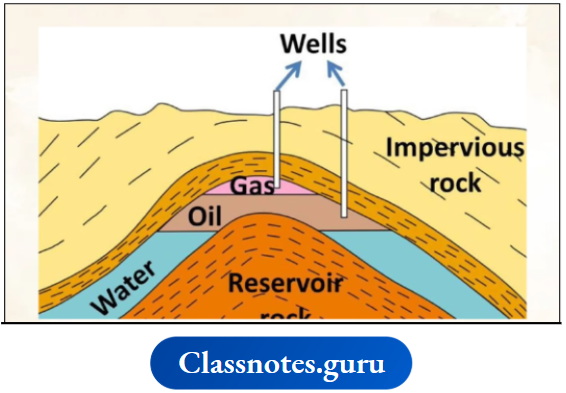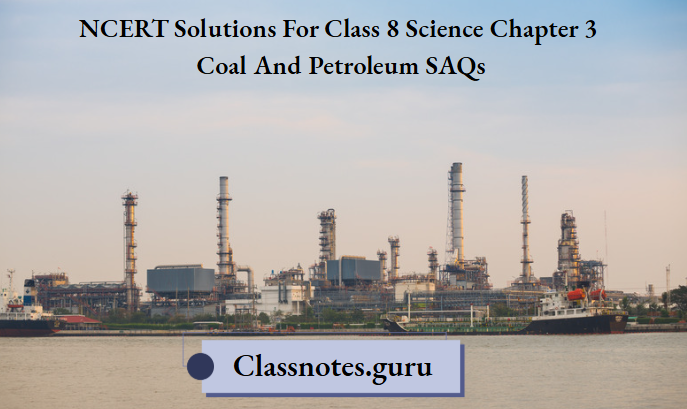NCERT Solutions For Class 8 Science Chapter 3 Coal And Petroleum Short Answer Questions
Question 1. Look at the figure where petroleum and natural gas deposits are shown. Why do we find an oil layer above a water layer?

Answer:
Oil and water do not mix, and they form two layers when mixed. OH is lighter than water, therefore it floats over water and is shown above the water layer.
NCERT Solutions for Coal and Petroleum SAQs Class 8
Question 2. Can we use our natural resources forever?
Answer:
No, we cannot use our natural resources forever. Some resources are present in limited quantities, which take millions of years to form and will exhaust one day, such as minerals and fossil fuels. etc.

Question 3. Where do we get coal from, and how is it formed?
Answer:
We get coal by the slow process of conversion of dead plants and animals buried deep under the Earth’s surface. The process is known as carbonisation.
NCERT Solutions for Class 8 Science Coal and Petroleum SAQs
Question 4. Can coal, petroleum, and natural gas be prepared in the laboratory from dead organisms?
Answer:
No, their formation is a very slow process, and the conditions of formation cannot be created in the laboratory.
![]()
Question 5. What are the advantages of using CNG and LPG as fuels?
Answer:
The advantages of using CNG and LPG as fuels are as follows:
- CNG and LPG are clean fuels.
- They do not produce pollution.
- They are easily available.
- They can be used directly for burning
NCERT Solutions for Coal and Petroleum Chapter 3 SAQs
Question 6. Write the various fractions of petroleum.
Answer:
The various fractions of petroleum are:
- Petroleum gas in liquid form (LPG)
- Petrol
- Kerosene
- Dissel
- Lubricating oil
- Paraffin wax
- Bitumen
